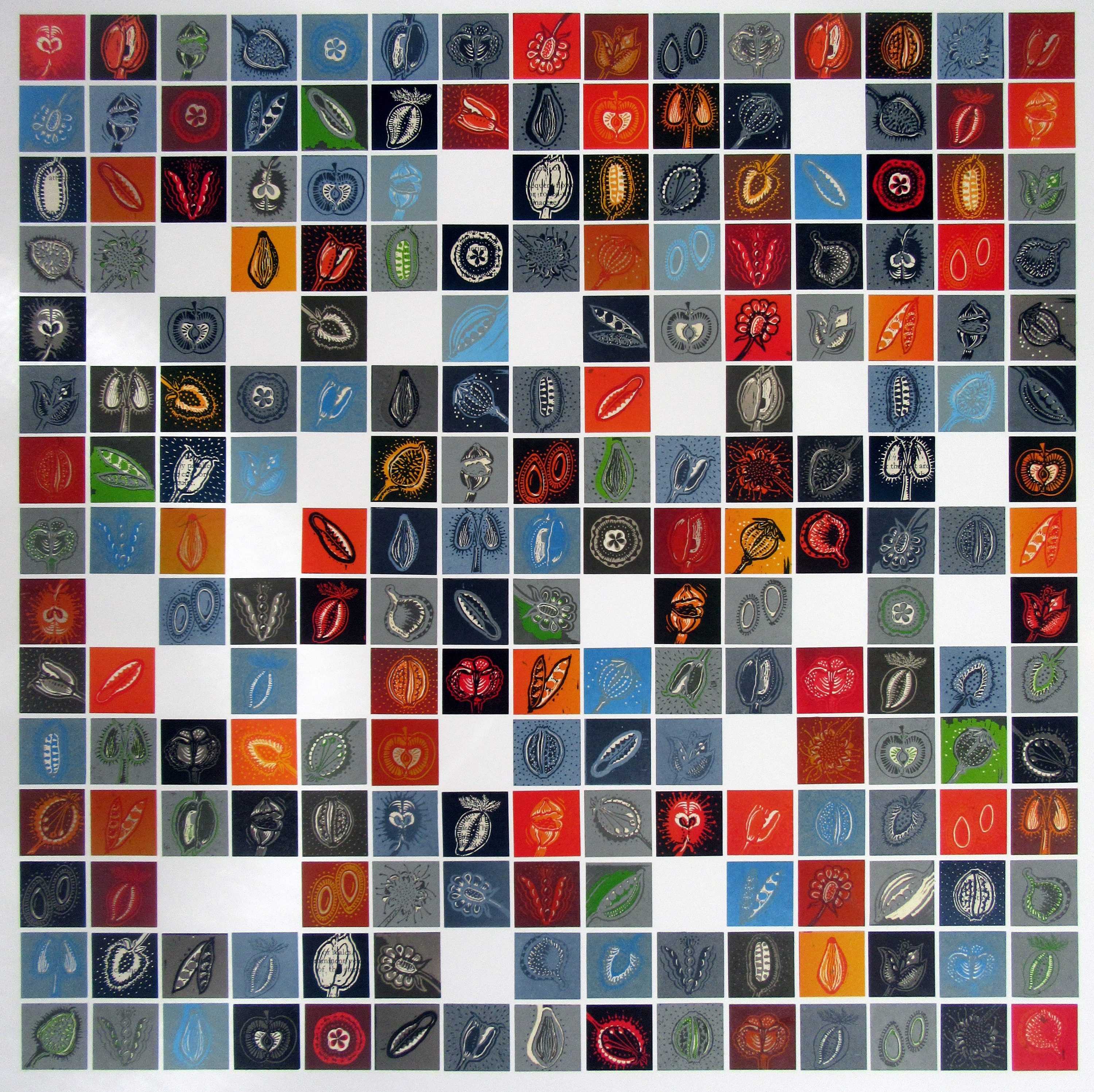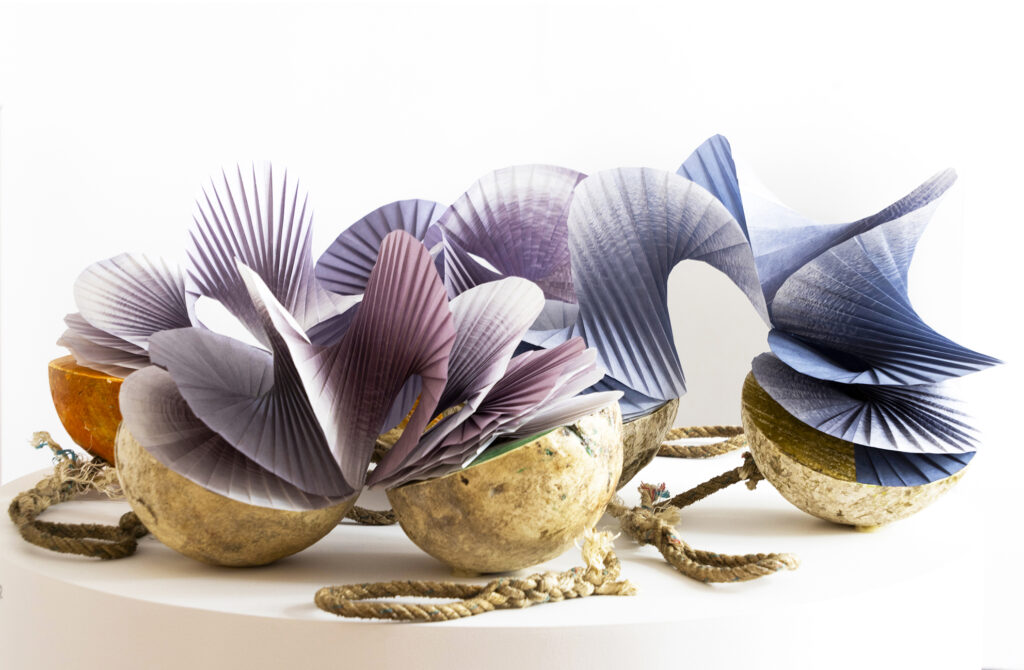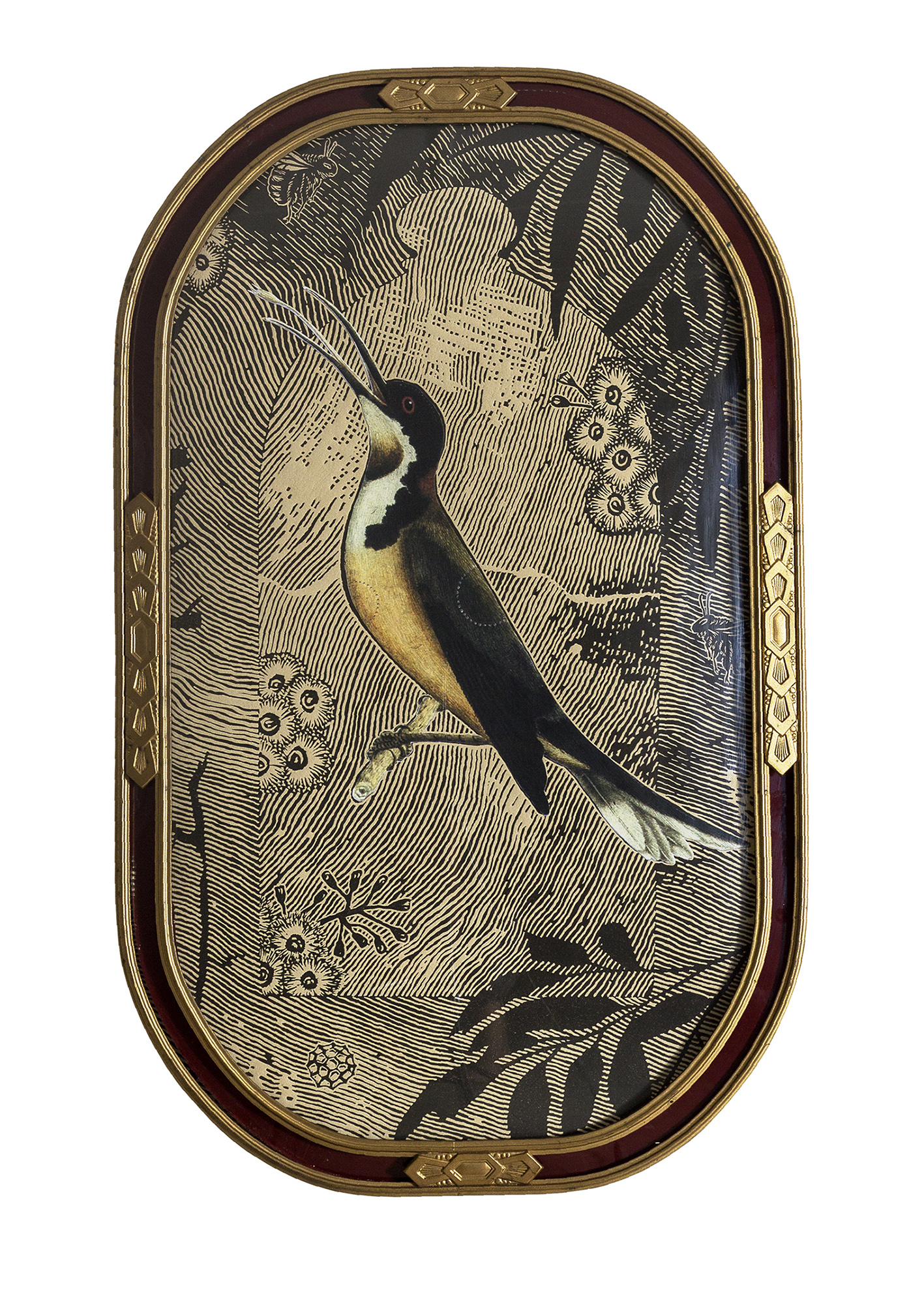
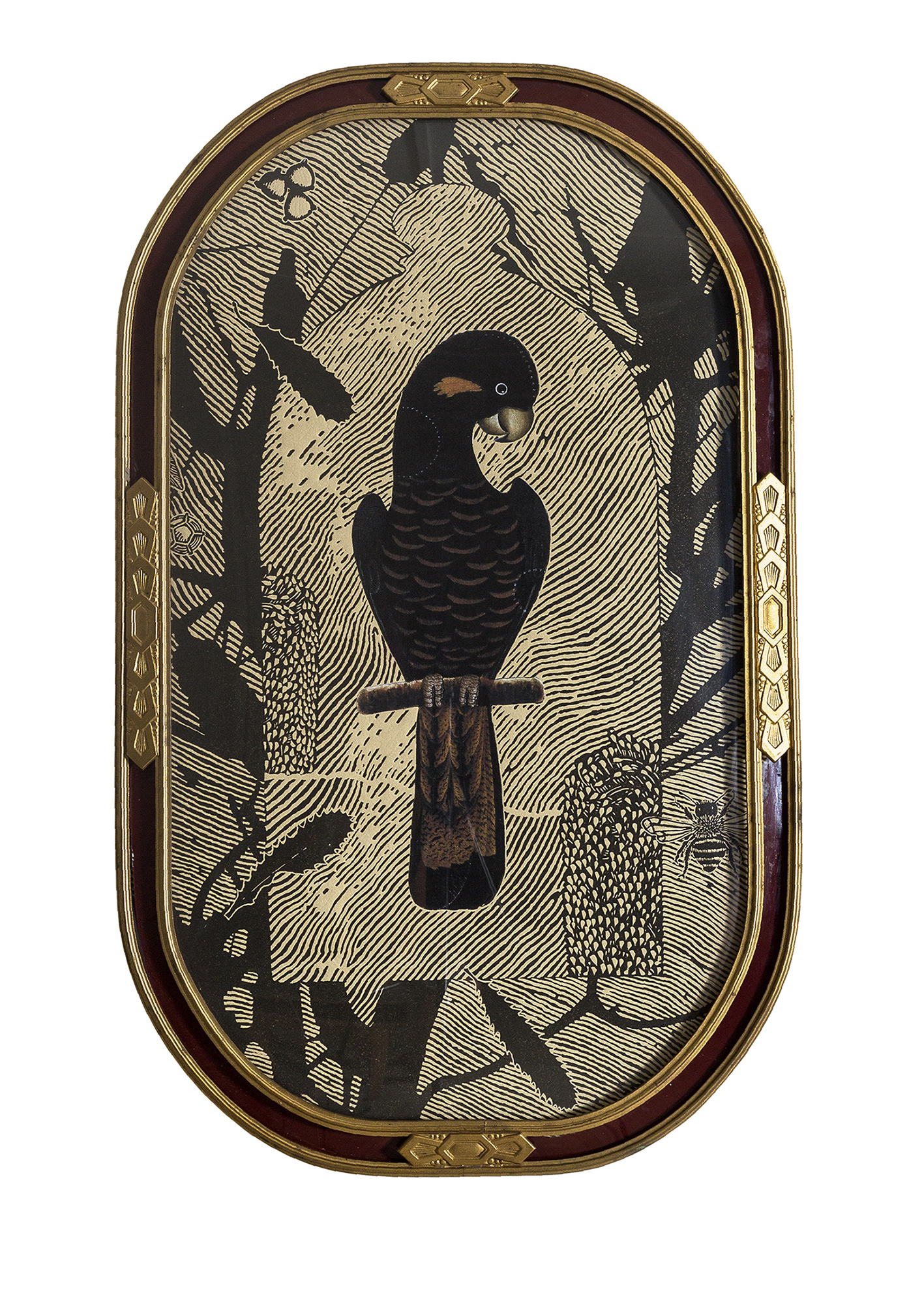
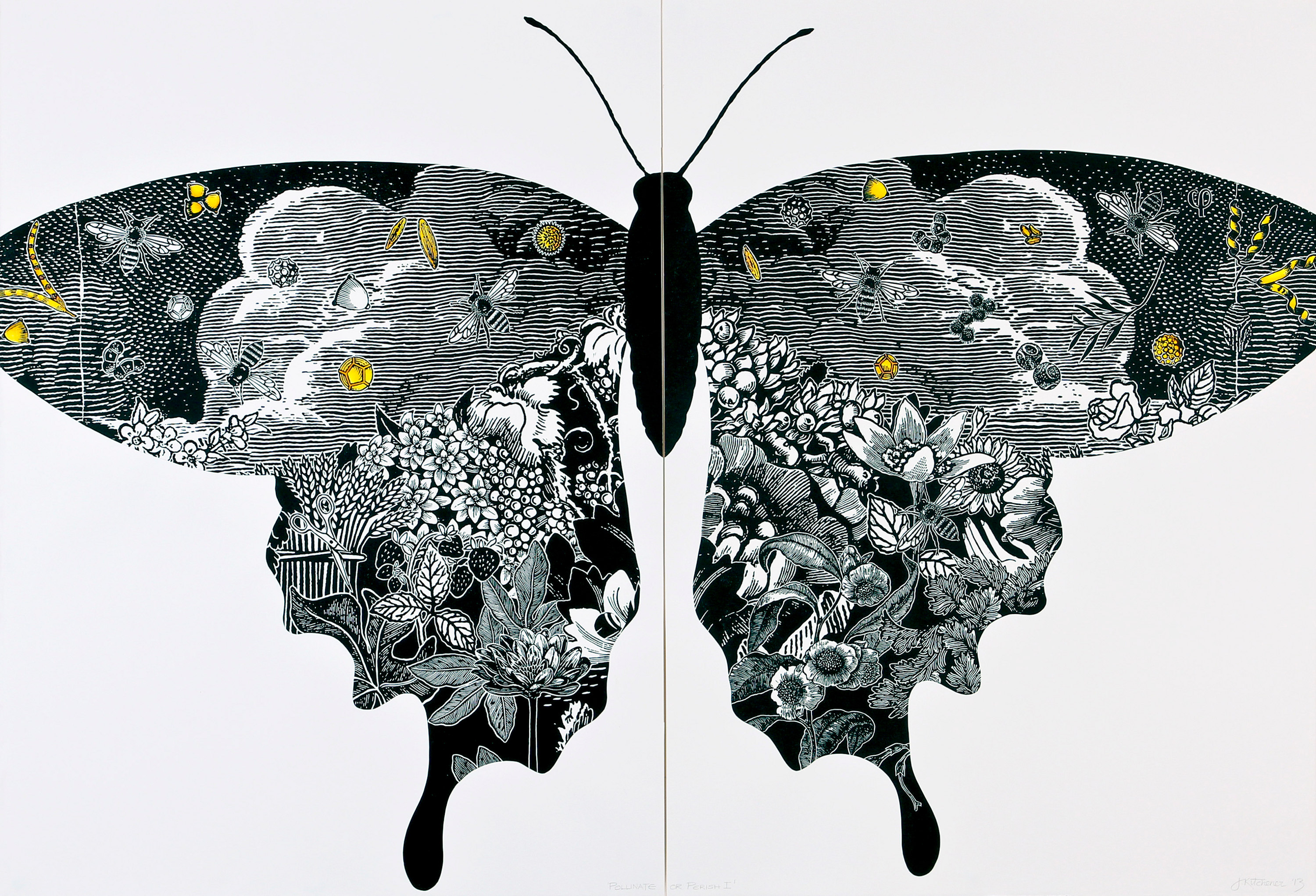
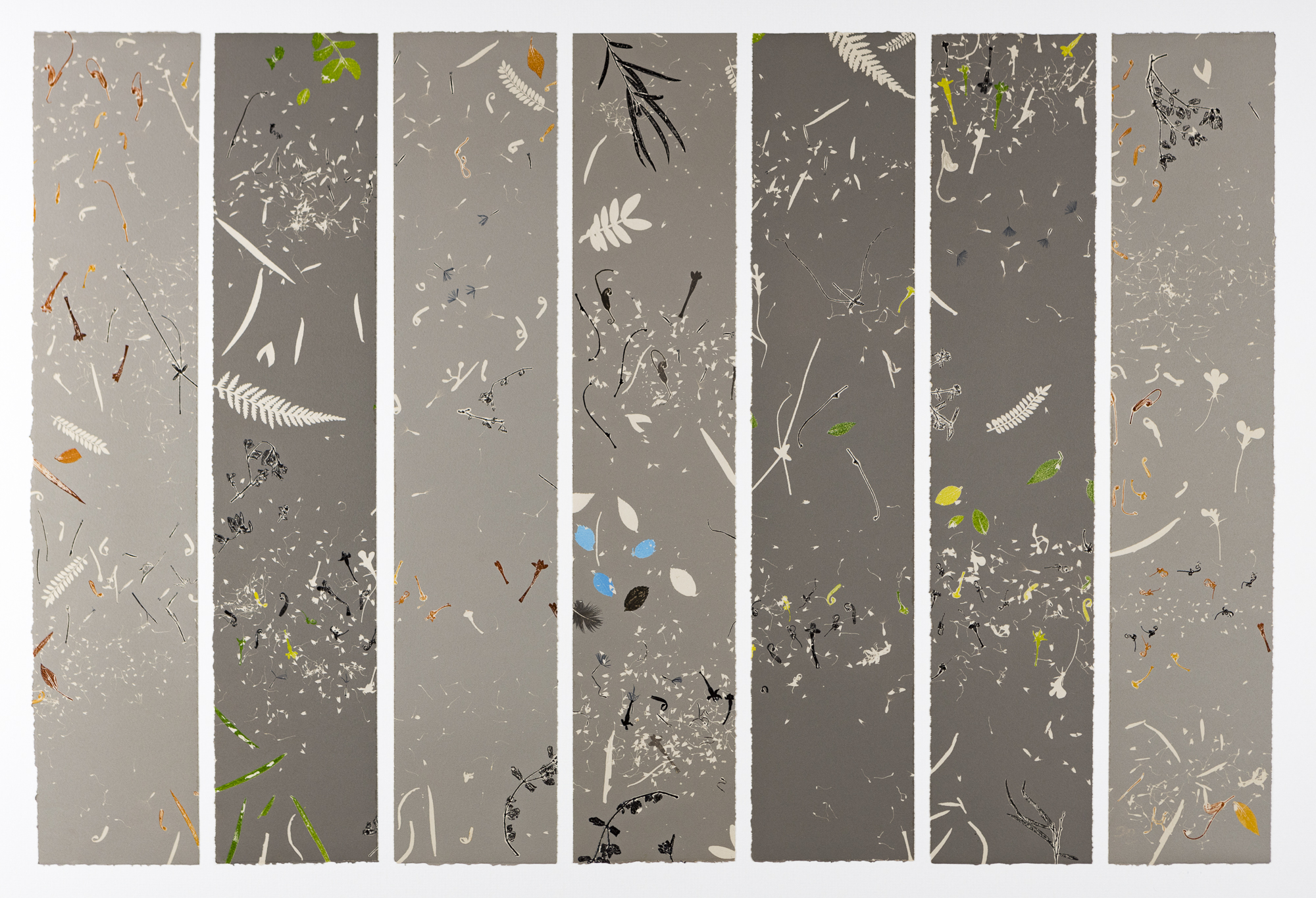
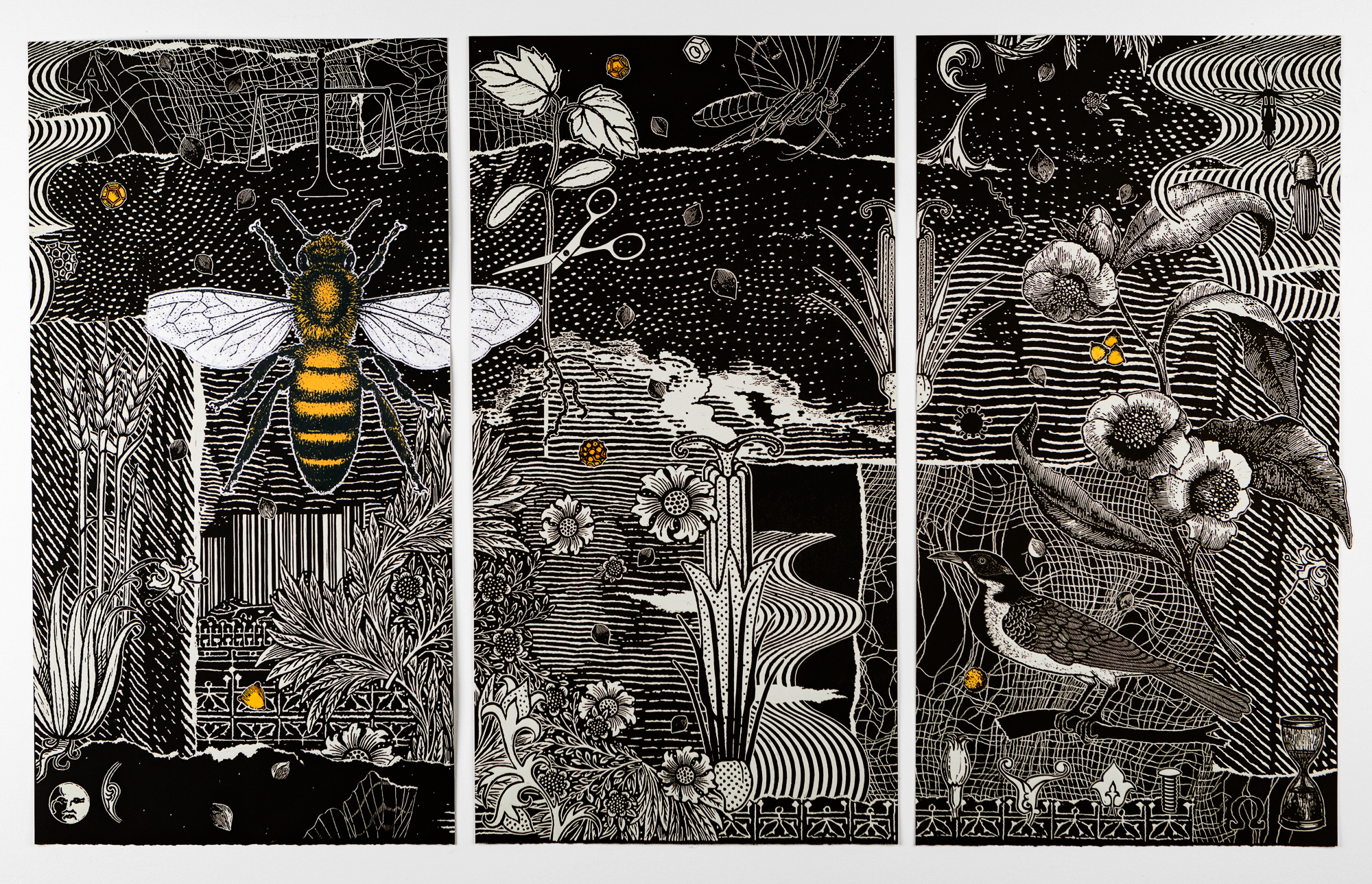
From top:
Jenny Kitchener:
Seed bank, 2021, 203 reduction prints, 48 x 48 cm
Family Meliphagidae (honeyeaters), 2017, linocut, collage, 47 x 30 cm
Family Psittacidae (parrots), linocut, collage, 47 x 30 cm
Pollinate or perish I, 2013, linocut, watercolour, 74 x 111 cm
Scatter, 2021, seven panel monoprint, 56 x 83 cm
Seed totem, 2021, three panel linocut with collage and watercolour, 56 x 93 cm
What were some of the foundation ideas for this exhibition project?
Since 2014 I have held a series of solo exhibitions in which I have sought to highlight the importance of the pollinating insects and birds and their essential contribution to plant reproduction. My latest exhibition Seed is the fifth and final show which addresses this theme of pollination.
Previous exhibitions concerned with pollination were Array (2014), Tweed River Regional Gallery, Folly (2015), Port Jackson Press Print Gallery, Pollinate (2018), Grafton Regional Art Gallery and Bloom (2019), PG Print Gallery.
I have lived on a rural property west of Kyogle, in the Northern Rivers area of NSW, for nearly forty years and on a daily basis I see and hear many of the birds, insects and plants depicted in my imagery: the sound of birdsong and the hum of insects provide a constant soundtrack to my life and work.
The title of my current exhibition Seed can be taken both literally and metaphorically. The creation of seed is the desired end product of a plant and without pollination, there will be no seed. I view this final exhibition, in my long engagement with the process of pollination, also as an end product: a seed.
I envisaged the exhibition Seed as both a conclusion and as the beginning of something new: akin to a seed which emerges at the end of a cycle and at the same time holds within it a fresh beginning – a new cycle.
How did the artwork selection take place?
Seed exhibits older work alongside new work. Key works have been selected from my previous shows on the theme of pollination and a new body of work, which places the focus on the production and dispersal of seed.
The inclusion of these works exhibitions is significant, as I would like visitors to experience a chronological narrative of my long engagement with the important role that insects and birds play in the process of pollination. In addition I want to bring into sharp focus the present and future plight of these same insects, birds and plants as their numbers steadily decrease.
Thus the selection and hanging of the work, in more or less the sequential order of their creation, mirrors my intent to create a show which highlights the life cycle of a seed: a beginning (older works) and an end (new works).
How does the exhibition manifest – what do visitors experience?
Sound is an important, if subliminal part, of the show. On entering the exhibition space, the sound of a ticking clock soon becomes apparent. The clock is placed high above the rest of the work, near to the entrance.
Then as the visitor views the work, and only if the room is quiet, they become aware of the sound of bird song. This morning chorus of birds, which was recorded on my property, is played at a very low volume. I want to reinforce the idea that sometimes, one needs to be quiet in order to experience the wonder of nature.
I want the artwork to function on two levels. Initially, I would like to draw the viewer into the imagery with a selective representation of the beauty and wonder of the natural world. Then, once the viewer looks more closely at the image, they hopefully may discover layers of meaning which go much deeper than the initial aesthetics of the work.
What are some of the keys works and what subject matter do they deal with?
Pollinate or perish (2014). Very large and imposing in scale, this hand-coloured linocut features a black and white butterfly which carries on its wings a cornucopia of plants. Enlarged yellow and orange pollen grains float above the vegetation and are joined in their dance by buzzing honey bees.
Family: Psittacidae (parrots) & Family: Meliphagidae (honeyeaters) (2017)
I have presented each bird ‘family’ in a pair of elaborate Victorian portrait style frames, in much the same way as we lovingly frame photographs of our own family members. In so doing, I hope to elevate the bird families’ status, engender respect for nature and highlight the valuable work that these wonderful creatures do in their role as pollinators.
Seed totem (2021) is a three panel linocut with interlocking imagery depicting the unfolding journey of a seed, from germination through to the production of blooms and to seed again, illustrating the cyclical nature of the life process, forever renewing and reproducing itself. The imagery includes pollinators such as the bee, beetles, a butterfly and a bird, thus highlighting the essential work of these pollinating animals.
The subtext of this work is the idea of the concept of time; time being measured as it slips away. The incorporation of the hourglass and a set of scales bring attention to the fleeting nature of existence and our current pressing environmental issues.
Seed bank (2021) is a grid format work of 203 tiny reduction linocuts. This print documents a variety of different seed forms, highlighting the diversity and variation in seed types. Within the predictable repetitive structure of the grid there are empty spaces. These areas of absence signify a disruption to the order of nature and the loss of diversity due to habitat loss.
Scatter (2021) is a seven panel monoprint. I wanted these ‘nature prints’ to be delicate, elegant and minimal – signifying fragility and strength at the same time. I have printed plants, mainly grasses, and seeds, which I have collected from the paddocks and garden on my property. The format needed to be horizontal as I wanted to describe the feeling of the movement and the scattering of seeds as they become airborne by the breeze; a feeling of a fleeting captured moment in time.
What is it about the printmaking experience that you most appreciate?
I love the variation which can be achieved with the different printmaking processes. For example, the linocut, with its bold and graphic qualities, allows me to make a strong statement. In contrast, another technique I love is the monoprint, which facilitates the transference of the most fine and delicate imagery onto the surface of the paper.
Afterword: I sometimes think of the imagery in my linocuts as akin to the didactic role of the stained glass window in churches; to tell a story in pictures.
—
Seed is at Lismore Regional Gallery until 28 November lismoregallery.org
—
Join the PCA and become a member. You’ll get the fine-art quarterly print magazine Imprint, free promotion of your exhibitions, discounts on art materials and a range of other exclusive benefits.

